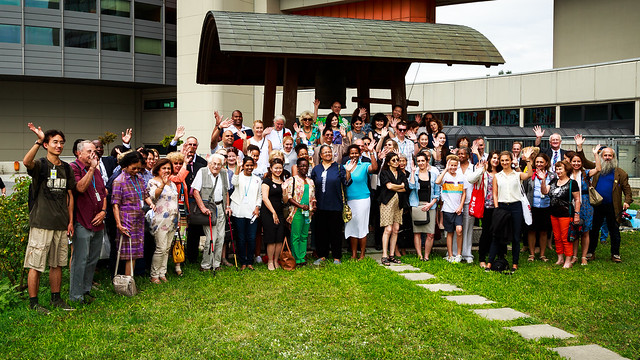Remembering the Victims of Hiroshima & Nagasaki
Vienna, 5 August 2016
On 5 August 2016, the Atomic Bomb Awareness Day, or GENBAKU NO-HI, event took place in the Rotunda of the Vienna International Centre to commemorate the victims of the Hiroshima and Nagasaki nuclear bombings that occurred on 6 and 9 August 1945.
While casualty figures vary greatly, in Hiroshima it is estimated some 90,000 to 166,000 people died within the first four months, while in Nagasaki the immediate deaths range from 60,000 to 80,000, according to the U.S.-Japanese Radiation Effects Research Foundation.
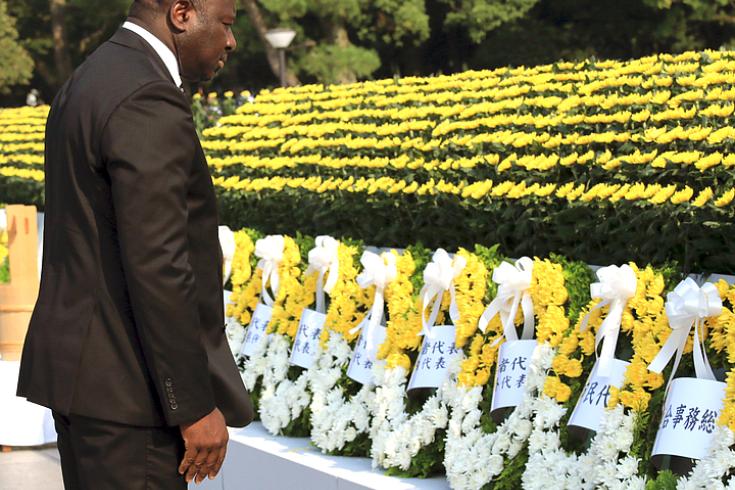
CTBTO Executive Secretary Zerbo at the 70th anniversary ceremony in Hiroshima 2015.

Secretary-General's Message to Peace Memorial Ceremony
"The bombing of Hiroshima and Nagasaki are a reminder of what horrors nuclear weapons can inflict."
While 400-500 nuclear explosions were carried out in each of the previous decades between the dawn of the atomic age and the opening for signature of the Comprehensive Nuclear-Test-Ban Treaty (CTBT) in September 1996, there have only been four tests this millennium. “This remarkable achievement was only possible because of the CTBT,” du Preez said. [Read the full speech here ]
Addressing the audience, eighteen year old student, Alissa Jachs, said it was important youth were engaged on issues of nuclear non-proliferation and disarmament.
“I’m here to tell you that we are motivated to take action in the nuclear disarmament negotiations. We are ready to participate, to speak up and be part of a growing movement,” Jachs said.
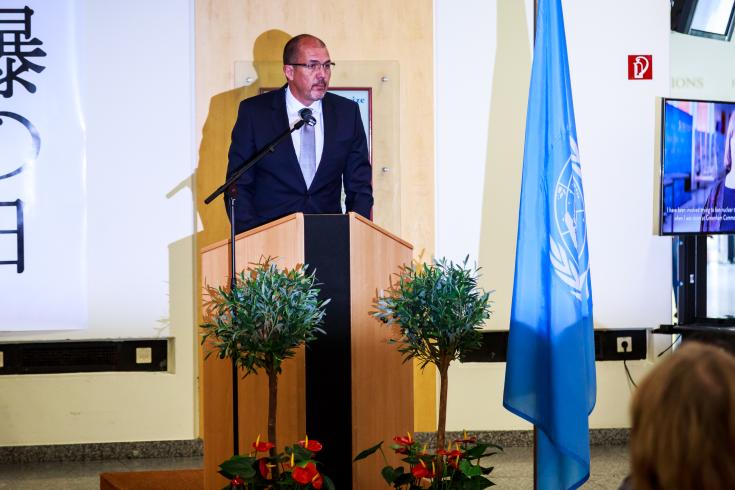
Jean du Preez, CTBTO Chief, External Relations, Protocol and International Cooperation delivering his speech.
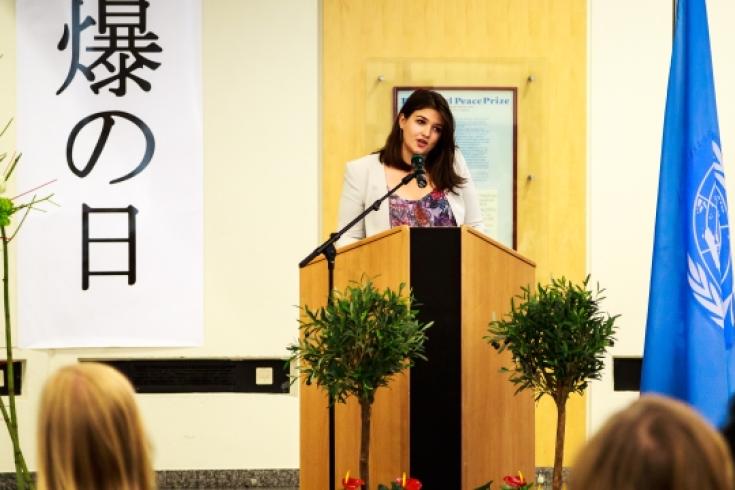
Alissa Jachs from A Voice for Youth addresses the audience.
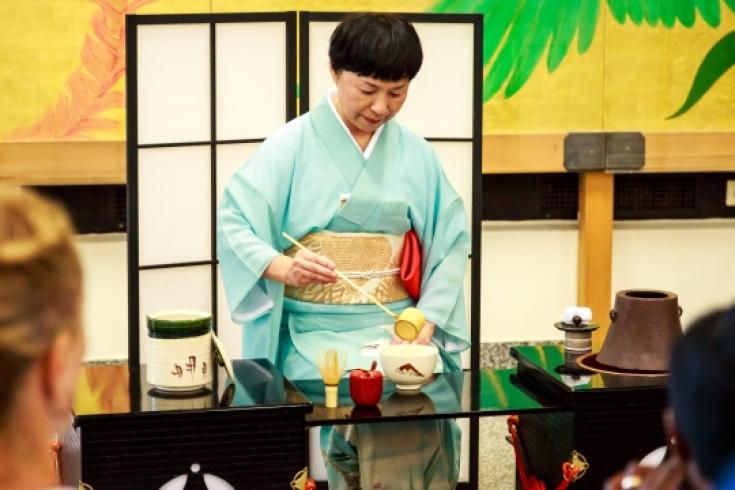
“The catastrophic consequences of nuclear testing are well known. We have seen them, read about them and, even worse, many have suffered from them. Let’s bring the CTBT into force. We owe it to ourselves and our future generations,”
“Japan continues to work with all countries in the world to promote realistic and practical measures for nuclear disarmament and non-proliferation…[including] promoting of the entry into force of the CTBT,” Taninai said.
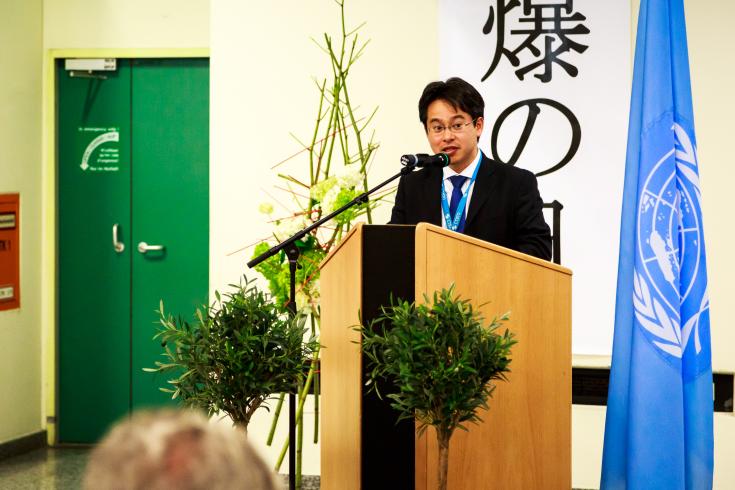
Ichitomo Taninai, Counsellor Permanent Mission of Japan, addressing the audience.
“Let me emphasise that Japan, as the only country that has suffered from the use of atomic bombings during the war, will continue to make its utmost efforts to pass on the realities of the use of atomic bombings across borders and generations,”
Hiroshima and Nagasaki
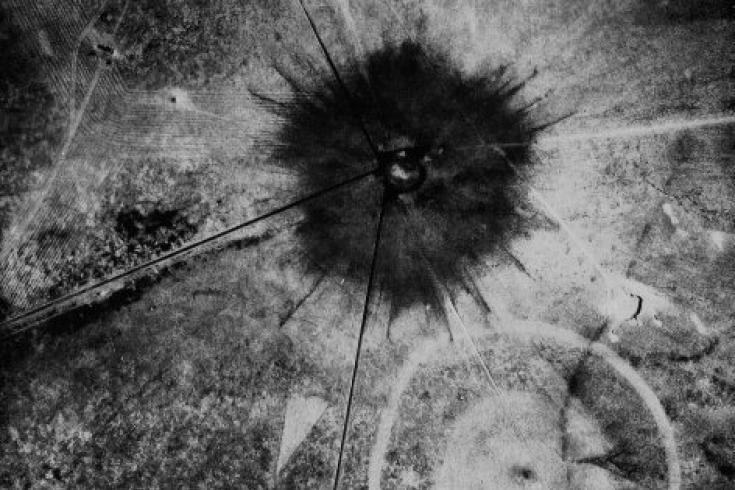
The test site after detonation: a crater of fused soil, also known as “Trinite” radiates from ground zero.
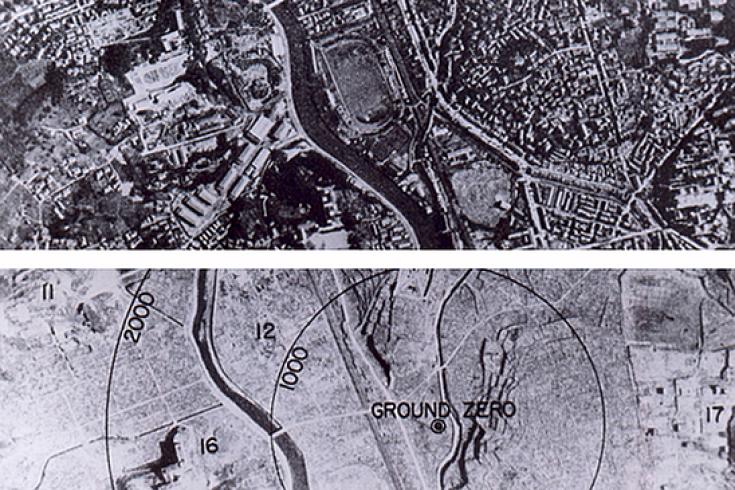
Nagasaki before and after.
Working towards ending nuclear testing
With nuclear testing, countries can develop even more powerful nuclear weapons. The CTBT bans all nuclear testing. At the CTBTO, we stand ready to implement this Treaty.
A verification regime is being built to monitor compliance with the Treaty. The CTBTO's global monitoring network now comprises 300 stations, some in the most remote and inaccessible areas of the Earth and sea. The network captures four types of data: seismic, hydroacoustic, infrasound and radionuclide. It is about 90 percent complete. When finished, the system will have 337 stations placed globally to monitor every corner of the planet effectively. The system swiftly, reliably and precisely detected all DPRK’s declared nuclear tests. The Treaty will enter into force once signed and ratified by the remaining eight nuclear technology holder countries: China, Egypt, the DPRK, India, Iran, Israel, Pakistan and the United States.
For Background:
2 Aug 2016

